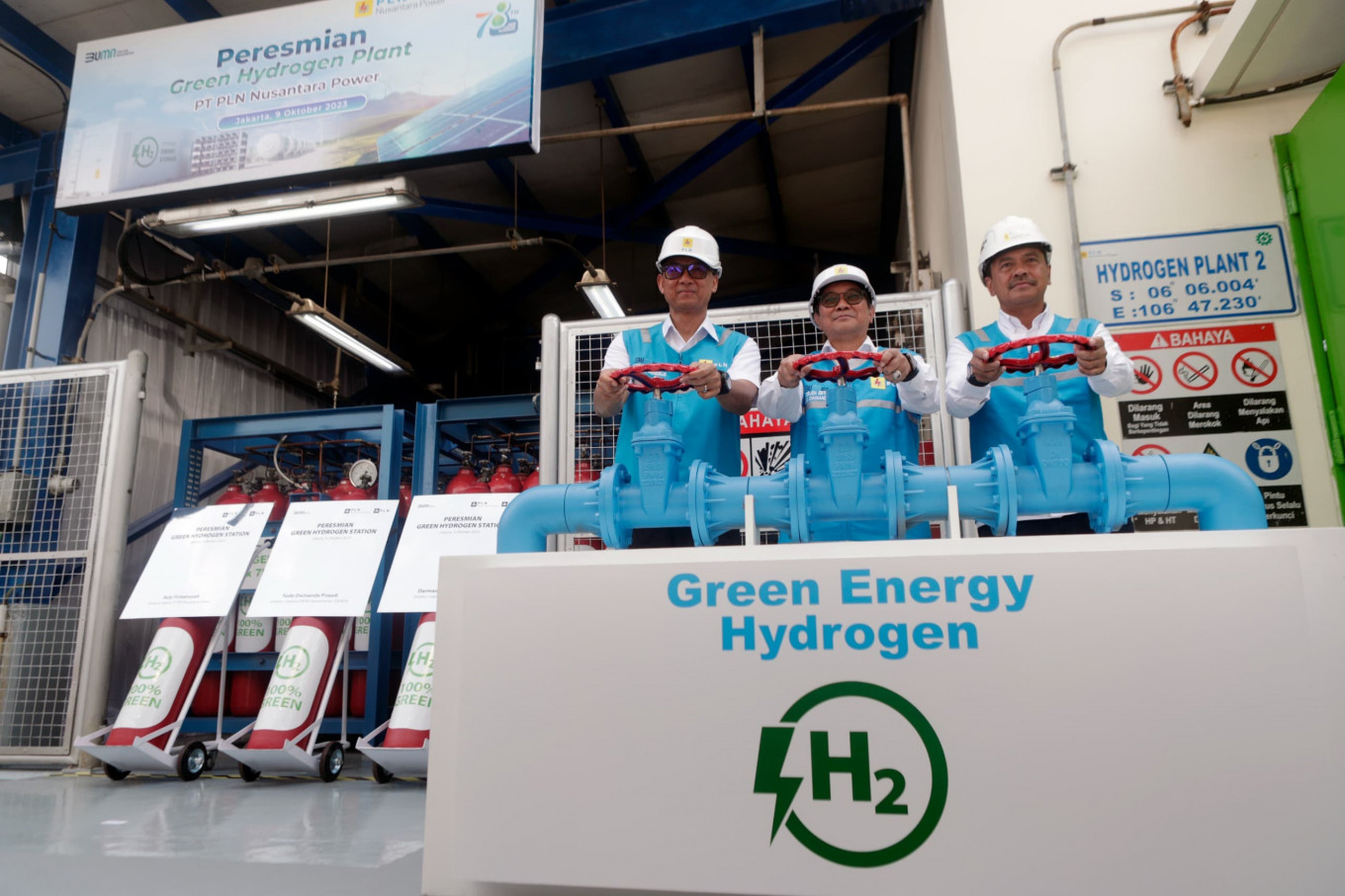![]()
(Photo: PLN)
Green hydrogen is widely recognized as one of the future cornerstones of green energy. According to the report from Indonesian Ministry of Energy and Mineral Resources (ESDM), the country’s green hydrogen potential is projected to reach 185,101 GWh by 2060. The report also pledges that Indonesia aims to become a green or low-carbon hydrogen exporting country as early as 2030.
A research report on Indonesia’s national hydrogen policy estimated a significant growth in demand for green hydrogen between 2030 and 2060. The sectors expected to have the highest utilization in transportation, energy, and manufacture sectors.
Taking into consideration the local context, target markets, and technological maturity, and align with the pathway to achieve net-zero carbon emissions by 2060, the research outlines the following three stages of hydrogen development in Indonesia:
First Stage (present - 2030)
The first stage primarily focuses on formulating hydrogen market policies and technical specifications, simultaneously, it initiates commercial pilot projects for hydrogen production.
Second Stage (2030 - 2040)
During this stage, hydrogen is ready to enter the market, while at the same time, the natural hydrogen begins to be utilized in transportation vehicles in Java and Kalimantan. Starting from 2030, hydrogen manufacturers commence international market penetration test for export. At this point, Indonesia is also actively participating in international trading of hydrogen and related derivatives.
Third Stage (2040 and beyond)
In this stage, renewable energy gradually becomes a major component of Indonesia’s energy market. This not only makes hydrogen more affordable for the general population, but also contributes to the maturation of industries and markets. As the local market supply and demand gradually reach equilibrium, Indonesia is expected to officially commence hydrogen exports from 2040 onwards.
Currently, the Indonesian state electricity company, Perusahaan Listrik Negara (PLN), stands as the company with the highest number of green hydrogen plants in Southeast Asia, totaling 21 facilities. These plants have the capacity to produce nearly 200 tons of hydrogen per year, a substantial increase from the previous output of 51 tons per year. Out of this production, 75 tons are allocated for the operational needs of the plants, including the cooling generator. The remaining 124 tons are designated for various other purposes, such as transportation and numerous industrial activities.

The first Green Hydrogen Plant (GHP) in Indonesia was introduced by PLN in October 2023. (Photo: PLN)
Nannif Danusaputro, the CEO of Pertamina NRE, the energy subsidiary of the Indonesian national oil company Pertamina, has expressed the company's ambition to become a pioneer in hydrogen energy in Southeast Asia by 2027. The plan includes opening up the international market and exporting clean hydrogen between 2027 and 2030, while simultaneously operating in the local market.
He is confident in enabling Pertamina NRE to start exporting clean energy from 2031 onwards, positioning Indonesia as a leader in the hydrogen economy. He emphasizes that Indonesia holds a strategic advantage, especially being situated within the regional hydrogen demand centers of Japan, South Korea, Singapore, and others. Additionally, Indonesia possesses untapped potential in green energy that is yet to be developed.
Australia, actively developing hydrogen energy, is expected to control the production cost of hydrogen at $1.7 USD per kilogram by 2030. Including the conversion cost and transportation expenses for ammonia, the estimated cost per kilogram for importing hydrogen energy from Australia is expected to be in the range of $3.7 to $4.7 USD.
Meanwhile, in South America, Chile plans to export hydrogen energy by 2030, with an estimated price of $1.5 USD per kilogram. Therefore, if Indonesia aims to compete in the export of low-carbon hydrogen energy, it will need to present competitive pricing.
According to data from the International Energy Agency (IEA), the largest global investment in hydrogen energy occurred in 2021. During that year, Germany committed to investing $10.3 billion. Meanwhile in the Asian region, the largest investment commitment came from Japan, namely US$6.5 billion.






